Last Updated on June 27, 2024
Halloween: The Curse of Michael Myers (watch it HERE), the sixth film in the Halloween franchise, isn’t just one of the most divisive entries in the series, it also had a more troubled production than any of the others. There was studio interference, a controversial recasting, and extensive reshoots, which resulted in two substantially different cuts of the film – one of which wasn’t officially available for decades. It’s a messy story, and we’re diving right into it with this episode of What the F*ck Happened to This Horror Movie?
Halloween 6 was truly behind the eight ball from the beginning, as in order to be a satisfying sequel it was going to have to address the mysteries 1989’s Halloween 5 had set up and not provided any answers to. In that film, we had seen that slasher Michael Myers had a symbol tattooed on his wrist, something we had never seen before and shouldn’t be there because Myers isn’t exactly the sort of person who will just stop by the local tattoo parlor to get some ink. This tattoo was actually something that was left over from an alternate opening sequence in which Myers was nursed to health by an occultist called Doctor Death. It was this occultist who put the tattoo on his wrist, and the symbol was supposed to mean “eternal life”. Doctor Death was cut out of the movie, but that tattoo was kept in – and the filmmakers doubled down on it by showing a Man in Black lurking around the town of Haddonfield, Illinois, sporting the exact same tattoo on his wrist. Nobody involved with Halloween 5 even knew who this Man in Black was, they just dropped him into the movie to add some more intrigue. One potential and ridiculous explanation put forth was that the Man in Black could be Michael Myers’ twin brother no one had ever mentioned before. But whoever this guy was, at the end of the film he busted into the Haddonfield Police Department and massacred the cops so he could rescue Myers from a jail cell – leaving Myers’ young niece Jamie Lloyd, the focus of his Halloween 4 and 5 killing sprees, to find the bodies.
Halloween 5 had reached theatres a week shy of a year after the release of part 4, and producer Moustapha Akkad initially planned to get the sixth film out quickly as well. One writer who was contacted in those early days was Quentin Tarantino, whose screenplays for True Romance and Natural Born Killers were going around Hollywood at the time. Tarantino wasn’t formally hired, but he did ponder a 20 minute sequence that would find Michael Myers and the Man in Black leaving a trail of bodies at coffee shops and other pit stops while on a road trip down Route 66.
When Halloween 5’s box office haul didn’t quite match up to what Halloween 4 had made, Akkad decided to take some extra time on this one… and the development of part 6 was slowed down further when the original Halloween’s creative team of John Carpenter and Debra Hill filed a lawsuit in an attempt to win back the rights to the franchise, which Akkad had taken control of when putting together the fourth movie. Carpenter’s hope was to take Halloween to New Line Cinema, the studio he was making In the Mouth of Madness for – the studio known as The House That Freddy Built due to the success of their Nightmare on Elm Street franchise, and which had just made Texas Chainsaw Massacre 3 and was also acquiring Jason Voorhees at the time. While fans would have been hyped to see Carpenter take control of Halloween again, they might not have been so enthusiastic about the idea he had in mind. Carpenter laid out his concept in an issue of Fangoria: “If you can’t kill Michael Myers, what do you do? You send him up into space, except he gets out up there and ends up on a space station.” Yep, there was a possibility that Myers could have gone to space even before Pinhead, Leprechaun, and Jason Voorhees got there.
But the lawsuit was decided in the favor of Akkad, and Dimension Films, the genre label of Miramax, bested New Line in a bidding war over the rights to distribute Halloween 6. Once Myers settled into his new home at Dimension, development on the sixth film hit warp speed. In April of 1994, screenwriter Phil Rosenberg turned in a draft of the script that Akkad was reportedly so displeased with that he threw it across the room after reading it. Miramax was about to release Pulp Fiction, so they asked Quentin Tarantino and his producer Lawrence Bender who they thought should direct the film. They recommended their friend Scott Spiegel, who had co-written Evil Dead II and directed the 1989 slasher Intruder, which Bender had produced. There was some talk of Spiegel rewriting the Halloween 6 script and possibly directing the film with Tarantino on board as producer, but he only got as far as writing a loose treatment before the project slipped away from him. Just one month after Rosenberg finished his draft, the writing duo of Irving Belateche and Lawrence Guterman had already turned in a rewrite. What’s interesting about the versions of the story writers were crafting at this point is how much they disregarded the Man in Black and Jamie Lloyd. Questions raised by Halloween 5 were not being answered. Instead, the scripts were introducing a new heroine named Dana, and featured Tommy Doyle – a character from the original Halloween – as a loner and virtual reality enthusiast who discovers that the way to defeat Michael Myers is to find a portal that can only be opened on Halloween night and have him get dragged into the underworld. Not too far off from what happened at the end of Jason Goes to Hell.
So in June of 1994, Akkad contacted Daniel Farrands, a Halloween super fan he had met four years earlier, and Farrands was given the job he had been dreaming of taking on ever since he saw Halloween 5: he was hired to write the sequel. It’s a good thing Farrands already had ideas for where he wanted to take Halloween 6, because by the time he was hired the scheduled start of production was only four months away – Dimension and Akkad wanted to have cameras rolling on this thing by the end of October 1994. Farrands kept a couple elements from the rejected drafts; the idea that Halloween has been banned in Haddonfield since the events of the fifth movie, the presence of a loner Tommy Doyle who has figured out the supernatural secrets of Michael Myers. He ditched the virtual reality aspect, though, and Dana was also gone. Instead, Farrands set out to solve the mysteries of Halloween 5. To do so, he drew some inspiration from the Curtis Richards novelization of the first Halloween, which started with a prologue that went back to the holiday’s Druid roots and presented the idea that the Myers bloodline is cursed. Another inspiration was the scene in Halloween II where we see that Myers had uncharacteristically written the word “Samhain” on a wall in blood.
Farrands’ story finds that a Druid cult has been built up around Michael Myers, who hears voices telling him to kill his family because he’s afflicted with an ancient curse. The symbol tattooed on his wrist is the Thorn rune, and his Halloween killing sprees coincide with nights in which a constellation in the shape of the rune is visible in the sky. The leader of the cult, the Man in Black, is Doctor Wynn of Smith’s Grove Sanitarium, a character who was seen in the first Halloween, arguing with Myers’ doctor Sam Loomis about the lax response to Myers’ escape and whether or not Myers knows how to drive a car. As it turns out, the cult captured Jamie Lloyd on Halloween night in 1989 and has kept her captive in the bowels of Smith’s Grove for six years. During that time, they even had Myers impregnate his teenage niece. Farrands has said that he didn’t really intend for the silent slasher to be the baby daddy, but by the time the movie was filming someone else had done revisions to the script that made it pretty clear that he was. In the initial cut of the movie, anyway.
Jamie gives birth to a boy who’ll end up being named Steven, then she manages to escape from Smith’s Grove with her newborn just in time for Halloween 1995. Michael chases her, and the Man in Black follows close behind. In Haddonfield, Tommy Doyle has unearthed all the information on the Thorn curse and is living across the street from Myers’ childhood home, which is now inhabited by relatives of the Strodes, the family that had adopted Myers’ sister, Jamie’s late mother Laurie, back in the day. One of the Strodes is a kid named Danny, who is hearing voices just like Michael Myers does. The cult’s plan is to have Myers kill Steven, therefore passing the Thorn curse over to little Danny, and somehow that will also magically make Doctor Loomis replace Wynn in the caretaker position. It’s quite convoluted and far off from the franchise’s simplistic roots, but this is the story that made it to the screen, more or less.
The writer had been found, but the director search continued. Hider in the House’s Matthew Patrick was hired to direct the film and asked cinematographer Billy Dickson to shoot it for him. Then Dickson was notified that Patrick had lost the gig. When Farrands was hired, he was told that When a Stranger Calls director Fred Walton was taking the helm. But that didn’t happen, either. Producer Paul Freeman was one of the few people who have ever seen a low budget 1993 crime film called Thieves Quartet, which was the feature directorial debut of Joe Chappelle, and he was so impressed with that movie that he offered the Halloween 6 job to Chappelle. Chappelle accepted the offer, and he’s the one who ended up directing the movie with Billy Dickson handling the cinematography.
Farrands had some high hopes for the cast that didn’t pan out. Since Christopher Lee had been John Carpenter’s first choice to play Doctor Loomis in the original Halloween, Farrands had written Doctor Wynn with Lee mind, despite the fact that the character had not been a regal British man when he appeared in the first movie. Instead of Lee, the role ended up going to American actor Mitchell Ryan, best known for being the villain in Lethal Weapon. For the role of radio shock jock Barry Simms, Farrands imagined the stunt casting of either Howard Stern or Mike Myers. The person cast was Leo Geter, the guy who got frisky with Linnea Quigley on a pool table in Silent Night, Deadly Night. But when it came to casting expectations and casting reality, the true heartbreaker was the role of Jamie Lloyd.
Jamie had been played by Danielle Harris in Halloweens 4 and 5, and when Harris heard they were looking to cast an actress as Jamie in part 6, she set out to claim the role that had always been hers. The production was looking for an 18 year old to play the character so they wouldn’t have to deal with child labor laws, and Harris was just 17 at the time – so she spent around four thousand dollars of her own money going to court to get emancipated so she could be considered an adult during the making of Halloween 6. After she had done that, the number crunchers working behind the scenes told her what they were willing to pay her to be in the film, and that offer was less than what she had spent to get emancipated. All she wanted was to get paid enough to cover the court costs she had racked up so she could do the movie, but she couldn’t get a higher offer, even with Moustapha Akkad backing her up. The people in charge of paying the actors wouldn’t budge and were insultingly dismissive of Harris, so she walked away from Halloween 6 and J.C. Brandy was cast as Jamie.
The presentation of Jamie in the film was disappointing anyway, as the role got whittled down more and more as the movie progressed. Jamie had a heroic battle with Myers at the end of the film in Farrands’ script, but in the shooting draft she was killed about halfway into the movie and in the cut that was released to theatres she dies very early on.
Thankfully, Donald Pleasence was brought back to play Doctor Loomis one more time, and ended up sharing scenes with an actor who was just getting started in 1994 but is one of the most popular actors in Hollywood these days: Paul Rudd, who was cast as off-kilter Michael Myers expert Tommy Doyle. Although Halloween 6 ended up being released after audiences had already seen Rudd in Clueless, this movie was Rudd’s first.
Shot with the working title Halloween 666: The Origin of Michael Myers, the film made its October 1994 production start date and proceeded to shoot through a bitterly cold fall, complete with snow. A Fangoria reporter was on set one night to witness a shot of Michael Myers pursuing heroine Kara Strode, played by Marianne Hagan, getting messed up because Myers actor George P. Wilbur slipped on a patch of ice. This was Wilbur’s second time playing Myers, as he had played the character for the majority of Halloween 4, making him the first person to ever play the role in two movies.
The cast and crew didn’t just have to deal with the ice and cold, but also with the fact that the script was constantly being rewritten during filming, with Paul Freeman, Joe Chappelle, and script doctor Rand Ravich all making their own tweaks to the story. But the movie was completed on schedule, and a cut was ready to be screened for a test audience in early 1995. And this is when things got really messy. As far as the producers were concerned, Halloween 6 was done and ready for its theatrical release. They were satisfied with the cut of the movie they had. Unfortunately, the test screening audience wasn’t so pleased with the film – and when Dimension saw the reactions that came out of that screening, they demanded that the film not only be recut, but also undergo major reshoots. Dimension would earn a reputation for tinkering with their movies too much, and the film that would end up being called Halloween: The Curse of Michael Myers is a prime example of that, another being when they made Wes Craven shoot two different versions of the werewolf movie Cursed. It’s quite fitting that both of those movies happened to have the word Curse in their titles.
Reshoots on Halloween 6 happened in July of 1995, just two months before the film’s September release date. Dimension wanted an almost entirely new third act for the movie, but they were stuck with using the Dr. Loomis scenes they already had because, sadly, Pleasence had passed away in February of ’95, very soon after principal photography had wrapped, at the age of 75. The first cut of the movie, which would come to be known as the Producer’s Cut since the producers had signed off on it, had leaned heavily into the Thorn cult aspect of the story, so much that it featured Tommy managing to stop Myers in his tracks by putting him in a circle of magical stones – something that even Farrands, the person who came up with the curse concept, felt was going too far. The mandate for the reshoots was to ditch the cult aspect of the story as much as possible. The robes worn by cultists were written out, a scene was added where Myers massacres the cult members, and new strangeness was added in that nobody could explain. The new ending has hints of genetic experiments, shots of fetuses in aquariums, and Tommy injects Myers with a weird green liquid that then comes leaking out of his face when Tommy beats him with a pipe. What does it all mean? No one knows, just like no one knew who the Man in Black was when they made Halloween 5. Farrands can’t explain it, because he wasn’t asked to write the new ending.
Wilbur also wasn’t asked back to play Michael Myers in the reshoots, with A. Michael Lerner wearing the mask for the new scenes. Oddly, Wilbur was still on set to play one of the cultists killed by Lerner’s Myers. Cinematographer Billy Dickson wasn’t available to shoot the new footage, so he was replaced by Thomas Callaway.
Dimension also felt that Halloween 6 would be improved with the addition of gore, so the special effects crew was tasked with adding more bloodshed to the kills. Some of the gore went way over-the-top: in one scene where Myers had simply snapped a man’s neck in the Producer’s Cut, the theatrical cut shows that he twists the man’s head so hard that his spine tears out of his flesh. The most famous moment of gore comes when a character is electrocuted until their head explodes. This gore was added into a movie that was now edited with flashy, music video style, and composer Alan Howarth re-recorded his score to accommodate the film’s new over-the-top tone, taking the music over-the-top as well with drums and electric guitar. That still wasn’t far enough for Chappelle, who brought in a friend of his to add more electric guitar to the soundtrack. The new music was paired with sound design that added strange sound effects throughout the movie.
The official release, the theatrical cut, ended up being 8 minutes shorter than the Producer’s Cut, but was so poorly received by critics, the general audience, and fans, that it makes you wonder if Dimension might have been better off just skipping the reshoots and releasing the film as it was at the test screening. While the 15 million Halloween: The Curse of Michael Myers made at the box office was better than part 5’s 11 million, it was still short of Halloween 4’s 17 million.
As soon as Halloween 6 was released, fans noticed it was lacking scenes that had been featured in the trailer and pictured in the pages of magazines like Fangoria. It wasn’t long before they learned about the existence of the Producer’s Cut – and soon bootleg VHS copies of the Producer’s Cut started spreading around, giving fans the chance to see the film in its original form, even though the picture was murky. The Producer’s Cut was so widely available and the demand for a better quality version of it was so great, this scrapped version of the movie ended up getting an official Blu-ray release from Scream Factory in 2014.
Both cuts of the film have their issues. No one involved could ever figure out the best ending for the story, and the fact that the franchise had gotten to a point where we’re talking about secret origins, curses, and cults was never going to sit well with every fan. But it’s good that the Producer’s Cut is out there so we can see what the movie was like before it lost the plot and went off the rails during the reshoots done for the theatrical cut. Now fans can choose which cut they like better – and both are equally valid, because no sequel ever continued the story of either version.
The movie’s box office total was low enough that Dimension was planning to send future sequels straight to video, much like they did with the Hellraiser and Children of the Corn franchises, among others. Michael Myers was saved from that fate when Jamie Lee Curtis decided to return as Laurie Strode, the heroine from the first two Halloweens, in the next movie… but her return also meant that the events of 4, 5, and 6 were tossed aside so that part 7 could be a direct sequel to part 2. Jamie Lloyd, the Druid cult, the curse of Thorn, the fetus aquariums, none of it mattered anymore. It was like it never happened at all.
A few of the previous episodes of the show can be seen below. To see more, head over to our JoBlo Horror Videos YouTube channel – and subscribe while you’re there!






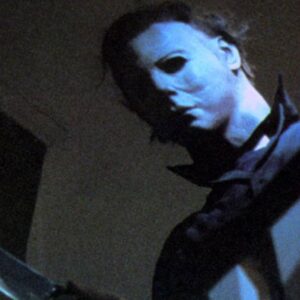
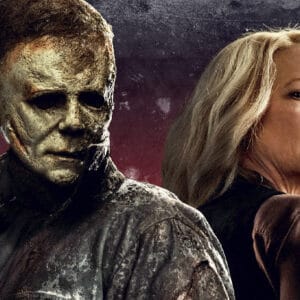
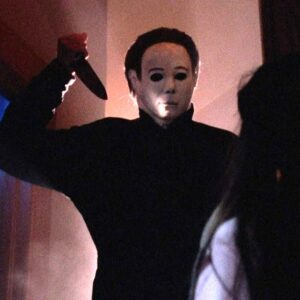
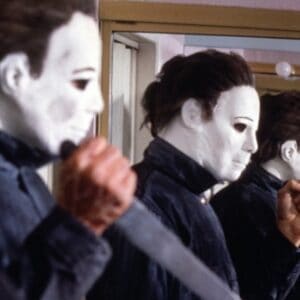

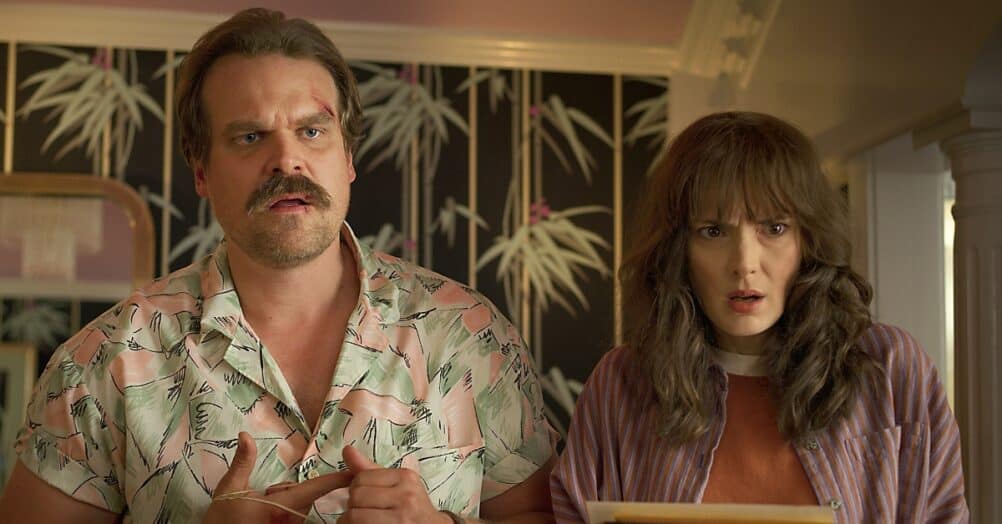

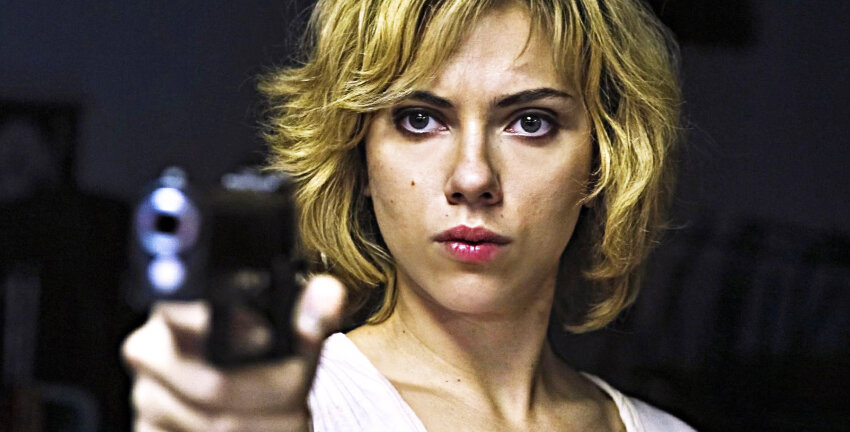




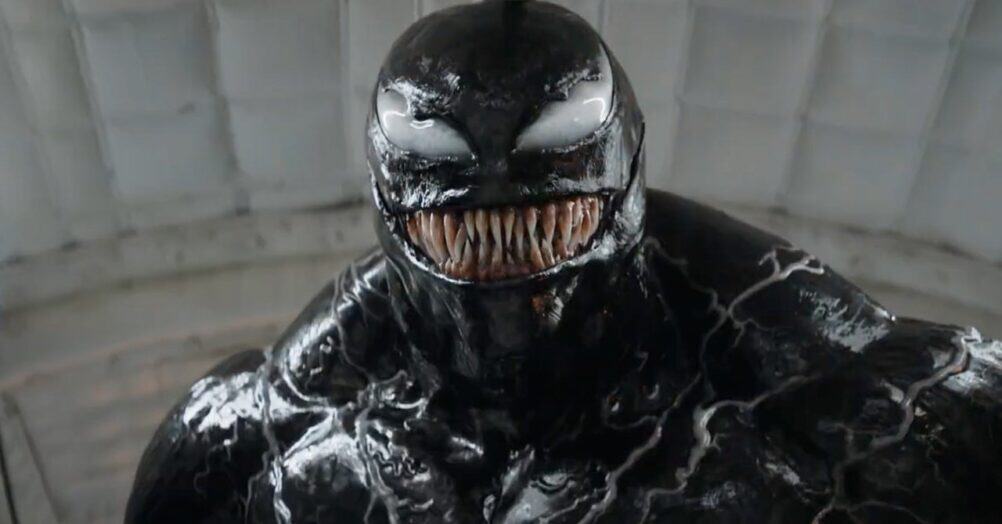

Follow the JOBLO MOVIE NETWORK
Follow us on YOUTUBE
Follow ARROW IN THE HEAD
Follow AITH on YOUTUBE